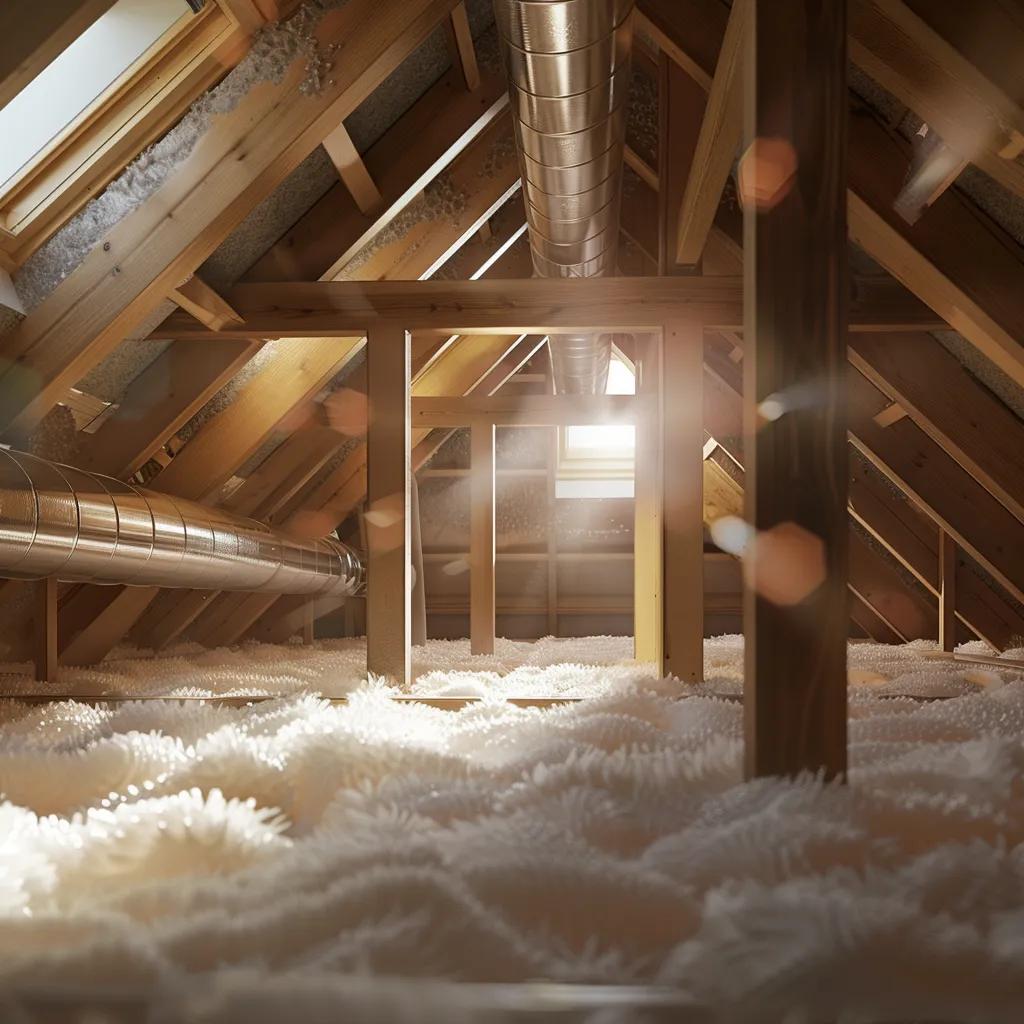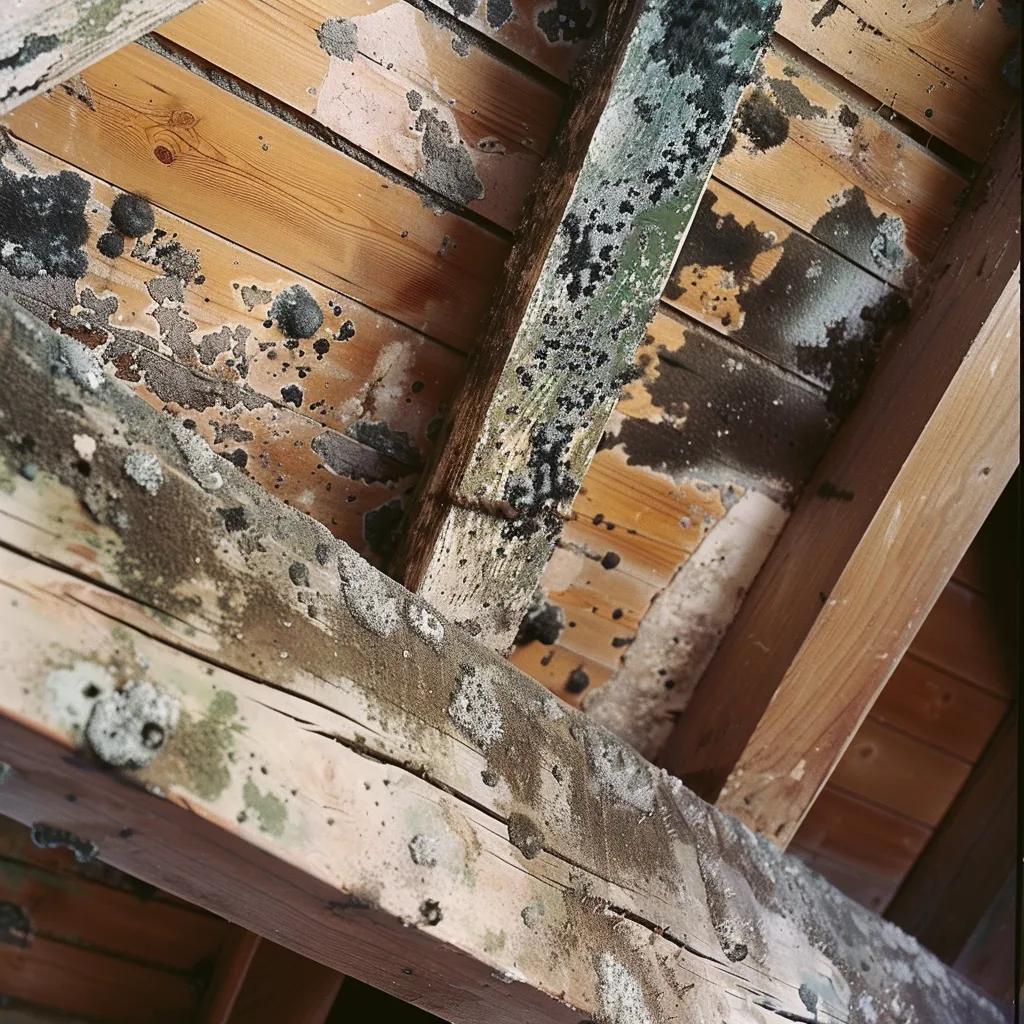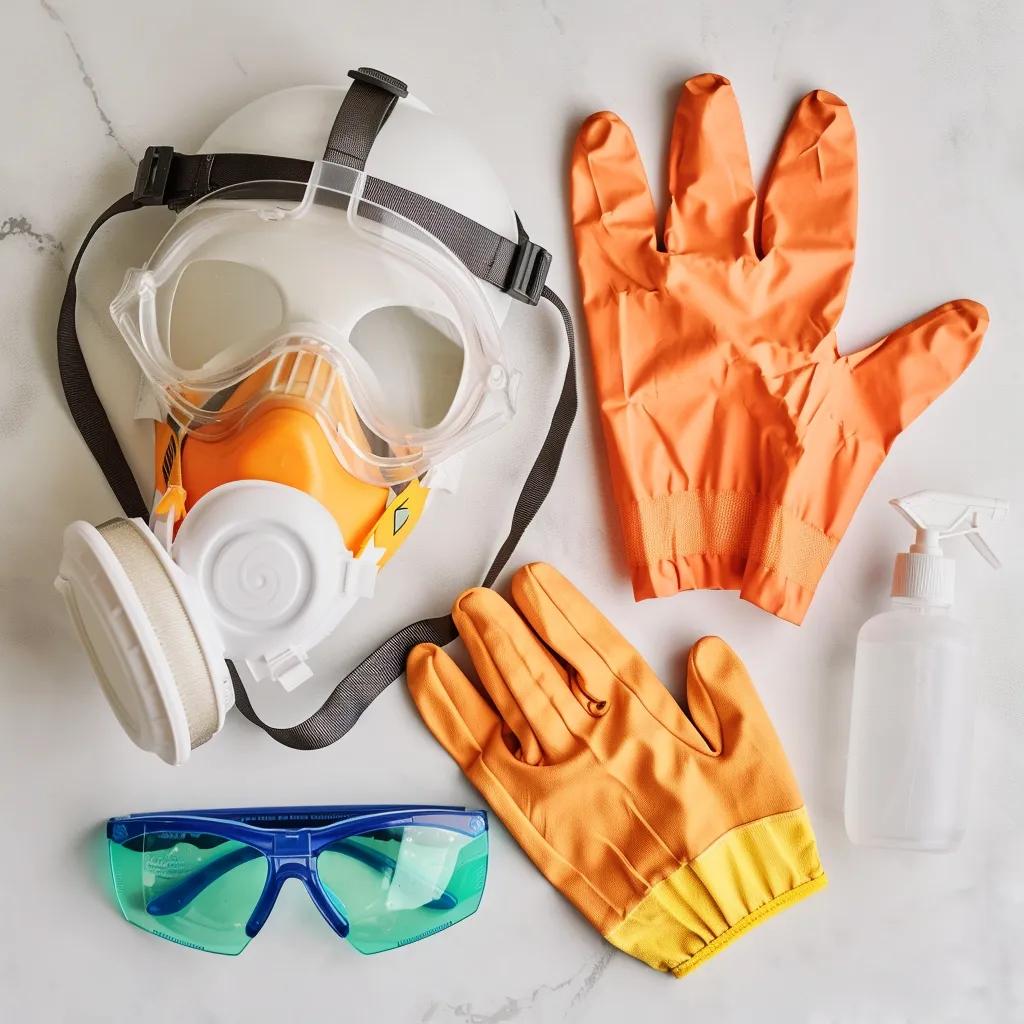Remove Mold in Your Attic: A Complete Step-by-Step Guide

The Silent Threat Above: Your Complete Guide to Eradicating Attic Mold and Reclaiming a Healthy Home

Imagine a hidden enemy silently eroding your home’s integrity and compromising your family’s health. That’s the reality of a mold infestation lurking in your attic. It degrades air quality, threatens structural stability, and can trigger or worsen respiratory issues without you even knowing. This comprehensive guide empowers you, the homeowner, with the precise steps needed to safely remove attic mold and prevent its insidious return. Whether you’re searching for “attic mold removal near me” or ready to tackle a small DIY cleanup, you’ll gain the knowledge to act confidently. We’ll walk you through recognizing the subtle visual and olfactory clues of mold, understanding the critical role of moisture and ventilation, applying effective remediation techniques (both DIY and professional), and implementing robust long-term prevention strategies. Each section builds on the last, guiding you from initial detection to containment, cleanup methods, crucial moisture control, insulation best practices, cost considerations, health risks, essential tools, and smart diagnostic strategies.
Is Mold Hiding in Your Attic? Unmasking the Signs
Mold in your attic isn’t just an unsightly nuisance; it’s a clear indicator of a deeper problem. It reveals itself through tell-tale visible growth, a distinct musty odor, and even subtle health symptoms caused by airborne spores. Spotting these signs early is your first, crucial step toward prompt attic mold removal and safeguarding your indoor air quality.
How to Visually Identify Mold Growth in Attics

Mold often appears as unsettling discolored patches, fuzzy textures, or clustered spots, clinging stubbornly to wood, insulation, and ductwork. Keep an eye out for:
- Unusual patches of black, green, or white discoloration on rafters or sheathing
- Fuzzy or slimy growth along seams, vents, or in hidden crawl spaces
- Water stains with concentric rings—a clear sign of repeated moisture intrusion
- Clusters of growth around plumbing vents and HVAC duct joints
These visual cues are your direct alert to active mold colonies demanding immediate remediation. But sight isn’t your only ally in detection…
What Does Attic Mold Really Smell Like?
Attic mold often betrays its presence with a strong, unmistakable musty odor. This damp, earthy scent, caused by microbial volatile organic compounds (MVOCs), intensifies near affected areas and can insidiously seep into your living spaces. Detecting that characteristic smell is just as critical as spotting physical growth when you’re planning effective mold remediation in your attic. Trust your nose—it’s a powerful diagnostic tool.
Are Your Health Symptoms a Cry for Help from Your Attic?
The invisible threat of indoor mold spores can silently aggravate existing allergies, worsen asthma, and even trigger new respiratory issues. Common symptoms that might point to attic mold exposure include:
- Persistent coughing and unexplained wheezing
- Chronic sinus congestion and a perpetually runny nose
- Skin irritation or an unexplained rash upon contact
- Eye redness and a persistent throat irritation
Paying close attention to these health indicators can help you prioritize removal efforts and guide your decision on when it’s time to call in a professional.
Health Risks of Mold Exposure
Exposure to mold isn’t just uncomfortable; it can lead to a range of serious health issues, from persistent respiratory problems to severe allergic reactions. These concerns are often directly linked to inhaling mold spores, which can act as potent triggers for asthma, allergies, and other respiratory conditions. The severity of these symptoms can vary widely, depending on individual sensitivity and the specific type of mold present.
This foundational research underscores the critical health risks associated with mold exposure, particularly its profound impact on respiratory health and allergic responses.
What Are the Most Common Types of Mold Found in Attics?
Understanding the enemy helps you fight it. The following table outlines frequent attic mold species, their typical appearance, and their potential health impact:
| Mold Species | Appearance Attribute | Health Impact Value |
|---|---|---|
| Stachybotrys | Dark green/black, slimy | Produces mycotoxins linked to severe respiratory issues |
| Cladosporium | Olive-green, suede-like | Commonly associated with asthma exacerbation |
| Aspergillus | Yellow, brown or gray | Can trigger allergic bronchopulmonary aspergillosis |
| Penicillium | Blue-green, powdery | A common allergen; may cause chronic sinusitis |
Uncovering the Root Cause: Why Does Mold Grow in Attics?
Attic mold isn’t a random occurrence; it’s the predictable outcome when moisture meets organic material and poor environmental controls. This creates the perfect, insidious breeding ground for fungal proliferation. Truly understanding these root causes is absolutely essential for not only effective attic mold removal but also for ensuring its long-term prevention and your peace of mind.
How Does Moisture Become Mold's Best Friend in Attics?
It’s a simple equation: high humidity combined with roof leaks elevates your attic’s relative humidity above a critical 60% threshold. This allows condensation to form on cold surfaces, turning your attic into a damp haven. Moisture-laden insulation and wood sheathing become prime breeding grounds, as standing water or persistently damp insulation directly fuels rapid colony expansion. It’s a constant battle against the unseen.
Why Is Poor Attic Ventilation a Major Mold Contributor?
Imagine your attic struggling to breathe. Inadequate airflow traps warm, moist air, preventing crucial evaporation and dramatically increasing condensation. Blocked soffit, ridge, or gable vents restrict the vital exchange with outside air, causing humidity levels to skyrocket and intensifying mold growth. Proper ventilation is your attic’s lifeline.
How Does Inadequate Insulation Affect Mold Development?
Your insulation acts as a critical barrier. Insufficient or compressed insulation allows heat to transfer directly from your warm living spaces into the cold attic. This creates significant temperature differentials that lead to condensation, essentially “sweating” surfaces. Worse, air leakage around framing, ducts, or recessed lights further exacerbates this moisture accumulation, inviting mold to thrive in hidden pockets.
What Role Do Roof and Plumbing Leaks Play in Attic Mold?
These aren’t just minor drips; they’re direct invitations for mold. Leaky shingles or compromised flashing permit rainwater to intrude, while faulty plumbing vents and drains introduce water directly into structural cavities. These persistent leaks saturate materials, creating a perpetually damp environment that actively invites mold colonization within your attic’s most vulnerable, hidden zones.
Your Action Plan: How to Safely Remove Mold from Your Attic, Step-by-Step
Taking on attic mold can feel daunting, but with the right approach, it’s a manageable task. Follow these step-by-step instructions to ensure a safe and effective mold removal process.
What Safety Precautions and Protective Equipment Are Absolutely Essential?

Before you even think about starting, your safety is non-negotiable. Equip yourself with the following critical gear:
- A NIOSH-approved respirator (P100 cartridges are a must for filtering mold spores)
- Durable chemical-resistant gloves and disposable coveralls
- Protective goggles with side shields to shield your eyes
- Shoe covers or dedicated work boots that can be thoroughly cleaned or disposed of
Proper PPE isn’t optional; it’s your shield against inhaling harmful spores, direct skin contact with mold, and exposure to hazardous cleaning chemicals during cleanup.
How to Contain Mold Spread During Removal?
Effective containment is paramount. It isolates the work area, preventing dangerous cross-contamination throughout your home:
- Seal all attic access points meticulously with heavy-duty plastic sheeting and duct tape.
- Install a negative air machine to create negative pressure, drawing air out of the work zone and exhausting spores safely outdoors.
- Cover all HVAC vents with plastic to prevent circulating spores through your home’s ventilation system.
- Keep all doors leading to the attic closed and use drop cloths under work zones to catch any falling debris.
These barriers are your strategic defense, confining mold spores, making cleanup more efficient, and significantly enhancing safety.
What Are Effective DIY Mold Cleaning Methods for Small Attic Areas?
For smaller infestations—typically under 10 square feet—you can empower yourself with these three proven DIY methods. Remember, strict PPE and containment are still required:
- White vinegar spray: Apply full-strength, let it sit for 30 minutes to penetrate, then scrub vigorously.
- Hydrogen peroxide solution (3%): Saturate the affected surface, agitate with a brush, and wipe dry.
- Baking soda paste: Mix with water to form a paste, scrub the mold, and rinse thoroughly to remove all residue.
These DIY approaches can quickly restore small areas, but always prioritize safety and thoroughness.
When Should You Stop DIY and Call a Professional Mold Remediation Service?
Knowing your limits is a sign of wisdom, not weakness. Professional remediation is strongly advised when:
- The infestation exceeds 10 square feet in size—this is the EPA’s general guideline.
- Water damage involves contaminated or standing water, indicating a more complex issue.
- Mold has penetrated deep into HVAC ducts or insulation, requiring specialized equipment.
- Occupants are experiencing severe or persistent health reactions, signaling a higher risk.
Calling a certified service like AtticCare Solutions ensures compliance with stringent EPA and industry standards, providing peace of mind when complexity or risk is high.
What Professional Mold Removal Techniques Are Used in Attics?
Professional services deploy advanced, specialized methods for truly thorough and effective remediation:
| Technique | Equipment Used | Benefit |
|---|---|---|
| Dry ice blasting | CO₂ pellets, blast nozzle | Removes mold without harsh chemicals, ideal for delicate surfaces |
| HEPA vacuuming | HEPA-filtered vacuums | Captures even microscopic spores effectively, preventing re-release |
| Biocide treatments | EPA-registered biocides | Kills mold at its root, preventing future growth |
| Air scrubbing | HEPA air scrubbers | Removes airborne particulates and odors, purifying the air |
Professional Mold Remediation Techniques
Professional mold remediation goes beyond surface cleaning, often involving advanced techniques like HEPA vacuuming and powerful air scrubbing. These methods are specifically designed to not only remove visible mold but also to capture and eliminate hidden spores and airborne particles effectively. The strategic use of specialized equipment is a cornerstone of professional mold removal, ensuring a comprehensive and lasting cleanup.
This authoritative citation reinforces the article’s discussion of professional mold removal techniques, emphasizing the critical role of specialized equipment and the importance of thorough remediation for long-term success.
Beyond Removal: How Do You Prevent Mold from Returning in Your Attic?
Removing mold is only half the battle. Long-term prevention hinges on consistently controlling moisture, optimizing airflow, and maintaining the integrity of your insulation. Implementing these proactive measures is your ultimate defense, stopping mold spores from recolonizing and ensuring your attic remains a healthy, mold-free zone for years to come.
What Are the Best Attic Ventilation Solutions to Prevent Mold?
Give your attic the breath of fresh air it needs. Enhance airflow by installing or upgrading these critical components:
- Soffit vents: Designed to draw fresh, cooler air in at the eaves.
- Ridge vents: Provide continuous exhaust for warm, moist air at the roof peak.
- Gable vents: Offer crucial cross-ventilation, especially effective when paired with other vent types.
- Powered attic fans: Actively regulate temperature and humidity, pushing out stale air.
Attic Ventilation and Mold Prevention
Proper attic ventilation isn’t just a recommendation; it’s a crucial defense against mold growth. By effectively regulating temperature and humidity levels, a well-designed ventilation system prevents the conditions mold thrives in. Systems like soffit vents, ridge vents, and gable vents work in harmony to remove moisture-laden air and significantly reduce the risk of condensation. This continuous air exchange is absolutely essential for maintaining a healthy, dry attic environment and preventing mold from ever taking hold.
This trusted source powerfully reinforces the paramount importance of ventilation in controlling moisture and preventing mold, aligning perfectly with our recommendations for robust attic mold prevention.
How Can Moisture and Humidity Be Controlled in Attics?
Mastering moisture control is a two-pronged approach: proactive leak repair and strategic dehumidification. Here’s how to keep your attic dry:
| Control Method | Attribute | Value |
|---|---|---|
| Roof and flashing repair | Moisture barrier | Immediately stops water intrusion at its source |
| Dehumidifier installation | Humidity control | Actively maintains relative humidity below 50% |
| Smart humidity sensors | Real-time monitoring | Provides instant alerts if humidity approaches the 60% threshold |
Why Is Proper Attic Insulation Critical for Mold Prevention?
Think of proper attic insulation as your home’s protective thermal shield. Correct insulation dramatically reduces thermal bridging, which is the transfer of heat through structural elements. This limits condensation, a primary driver of mold, and simultaneously boosts your home’s energy efficiency. Using the right R-value for your specific climate and ensuring complete air sealing around all penetrations (like pipes and wires) stops warm interior air from escaping into the cold attic, preventing the very conditions mold loves.
What Maintenance Practices Help Keep Your Attic Mold-Free?
Consistent, proactive upkeep is your best long-term strategy. Regular maintenance includes:
- Quarterly visual inspections: Take a careful look under rafters and insulation for any early signs.
- Immediate repair: Address any detected leaks or damage without delay.
- Cleaning debris: Regularly remove any organic matter or debris from surfaces.
- Monitoring humidity: Use digital gauges to keep a watchful eye on humidity levels.
This consistent vigilance uncovers potential issues early, allowing you to sustain a truly mold-unfriendly environment.
The Bottom Line: How Much Does Attic Mold Removal Cost and Is It Covered by Insurance?
Understanding the financial aspect of attic mold remediation is crucial for homeowners. The cost can vary significantly based on the extent of the problem, the type of mold, and the methods required. When it comes to insurance, coverage typically depends on whether the damage was sudden and accidental versus a result of gradual neglect.
What Factors Influence the Cost of Attic Mold Remediation?
Several key factors directly drive the cost of attic mold removal. Being aware of these helps you budget accurately and avoid surprises:
- Infestation size: The square footage of mold and the specific mold species present.
- Complexity of containment and access: Difficult-to-reach areas or extensive containment needs.
- Removal method: DIY approaches are cheaper, but professional services offer specialized equipment and expertise.
- Replacement of materials: The need to replace insulation, drywall, or other building materials.
- Post-remediation testing and clearance: Ensuring the mold is truly gone and the air is safe.
Understanding these factors empowers homeowners to budget accurately and make informed decisions for attic mold removal.
How Do Insurance Policies Typically Handle Attic Mold Damage?
It’s a common question with a nuanced answer. Most standard homeowner policies *will* cover mold damage resulting from sudden, accidental water events—think a burst pipe or a sudden storm-related roof leak. However, they typically *exclude* damage from maintenance issues like long-standing roof leaks or gradual infiltration due to neglect. Damage that occurs over time, often due to a lack of maintenance, usually falls outside of coverage. Always review your specific policy and consult your insurer.
How to Choose a Certified Professional Mold Remediation Company?
Selecting the right professional is paramount for effective and safe mold removal. Choose a provider by verifying these critical credentials:
- Certifications: Ensure technicians hold IICRC or NORMI certifications, indicating specialized training.
- Guidelines adherence: Confirm they strictly adhere to EPA Mold Remediation Guidelines.
- Reputation: Look for positive reviews and case studies that demonstrate proven results.
- Protection: Inquire about their insurance coverage and any warranty offerings for mold recurrence.
Certified experts not only ensure safe, code-compliant attic mold removal but also offer invaluable long-term protection and peace of mind.
Your Health at Stake: What Are the Risks Associated with Mold in Your Attic?
It’s not just about your home’s structure; it’s about your family’s well-being. Mold spores circulating from an attic can significantly degrade indoor air quality and pose serious respiratory and allergic risks to everyone living under your roof.
How Does Attic Mold Affect Indoor Air Quality and Respiratory Health?
When mold spores are released from your attic into your living spaces, they dramatically increase particulate counts in the air you breathe. This can trigger severe asthma attacks, chronic allergic rhinitis, and a host of other pulmonary conditions. Taking control of attic mold directly translates to a profound improvement in your overall indoor air quality and a significant reduction in potential health complications for your family.
What Are Common Symptoms Caused by Mold Exposure?
Exposure to mold can manifest in a variety of uncomfortable and persistent symptoms, including:
- Persistent coughing or unexplained wheezing
- Chronic sinusitis and nasal congestion that won’t clear
- Skin redness or itching, often without a clear cause
- Unexplained headaches and persistent fatigue
The good news? These symptoms often show significant improvement once the mold sources are completely eliminated from your home.
When Should You Seek Medical Advice for Mold-Related Health Issues?
Your health is your priority. Consult a healthcare professional without delay if you experience any of the following:
- Worsening asthma or new, unexplained respiratory distress
- Persistent allergic reactions that don’t respond to typical treatments
- You have immune-compromised conditions that complicate infection risk
- You notice neurological symptoms like memory loss or persistent headaches
Early medical evaluation is crucial to prevent serious complications from prolonged mold exposure and to ensure your well-being.
Your Arsenal: What Tools and Products Are Recommended for Attic Mold Cleaning?
Tackling mold effectively requires more than just elbow grease. It demands specialized equipment and carefully selected cleaning agents, all chosen with safety and efficacy in mind. Here’s what you’ll need to get the job done right.
Which Personal Protective Equipment (PPE) Is Essential for Mold Removal?
We can’t stress this enough: proper PPE is your first line of defense. Your recommended PPE includes:
- A NIOSH-approved respirator with P100 filters for superior spore filtration
- Chemical-resistant nitrile gloves to protect your hands
- Full-face goggles with indirect venting to shield your eyes from splashes and airborne particles
- Disposable coveralls and boot covers to prevent tracking spores throughout your home
This proper PPE is non-negotiable; it protects both professional technicians and diligent homeowners from inhalation and direct contact hazards.
What Cleaning Agents Are Effective for Attic Mold Removal?
Choosing the right cleaning agent is key to thorough remediation without damaging your surfaces. Effective EPA-registered and household solutions include:
- Biocidal cleaners: Specifically formulated to kill mold before its physical removal.
- White vinegar: Its acetic acid effectively disrupts mold cell walls, making it a powerful natural option.
- Hydrogen peroxide (3%): An oxidizer that effectively deactivates mold spores.
- Enzymatic detergents: These break down mold proteins, aiding in deep cleaning.
Selecting the appropriate agent ensures thorough remediation while safeguarding your attic’s structural elements.
What Specialized Equipment Is Used in Professional Mold Remediation?
Professionals don’t just clean; they remediate with precision. They rely on a suite of specialized tools to ensure comprehensive and safe mold removal:
- HEPA air scrubbers and vacuums: For superior particulate capture, ensuring no spore is left behind.
- Dry ice blasters: Offer a chemical-free solution for effective surface cleaning.
- Negative air machines: Crucial for maintaining containment and preventing cross-contamination.
- Moisture meters and infrared cameras: Essential for detecting hidden leaks and moisture sources that fuel mold growth.
These advanced tools deliver unparalleled precision cleaning, enhance safety, and guarantee comprehensive mold removal, giving you true peace of mind.
Your Detective Work: How Can You Diagnose Mold Problems in Your Attic?
Becoming your own attic detective is the first step to solving a potential mold problem. Knowing what to look for and how to interpret the clues can save you significant time, money, and stress.
What Are the Common Signs and Symptoms to Look for During Inspection?
During your attic walkthrough, put on your detective hat and note these critical signs:
- Any unusual discoloration or fuzzy growth on structural elements like rafters or sheathing.
- A distinct musty, stale odor, especially if it’s concentrated in corners or low-airflow areas.
- High humidity readings, particularly if they consistently register above 60%.
- Any unexplained health complaints among occupants that seem to correlate with attic proximity.
How Can Interactive Tools Help Identify Attic Mold Risks?
Leverage modern technology to your advantage. Online risk calculators and symptom checkers can be incredibly helpful. These tools evaluate factors like your regional humidity, the age of your roof, and your current ventilation status. They can suggest likely causes of mold and recommend the most appropriate next steps for a thorough mold inspection, giving you a clearer picture before you even step into the attic.
When Is Mold Testing Recommended and What Does It Involve?
While visual inspection and smell are powerful, sometimes you need definitive proof. Professional mold testing, using air and surface samples, is highly recommended when:
- Hidden or airborne mold is suspected, even if there’s no visible growth.
- Occupants are experiencing unexplained health issues that could be mold-related.
- Insurance claims require documented contamination levels for proper processing.
Testing involves meticulous sample collection by certified technicians, followed by rigorous laboratory analysis. This provides precise data, allowing for tailored and highly effective remediation strategies.
Attic mold removal demands a systematic, proactive approach: detect the signs early, aggressively address the underlying moisture and ventilation causes, apply safe and effective removal methods, and reinforce robust prevention measures. Whether you choose the expertise of a seasoned professional or embark on a careful DIY cleanup, maintaining a dry, well-ventilated attic is your ultimate guarantee that mold cannot return. Don’t wait for the problem to grow; schedule an expert inspection today to protect your home and, most importantly, your family’s health.

